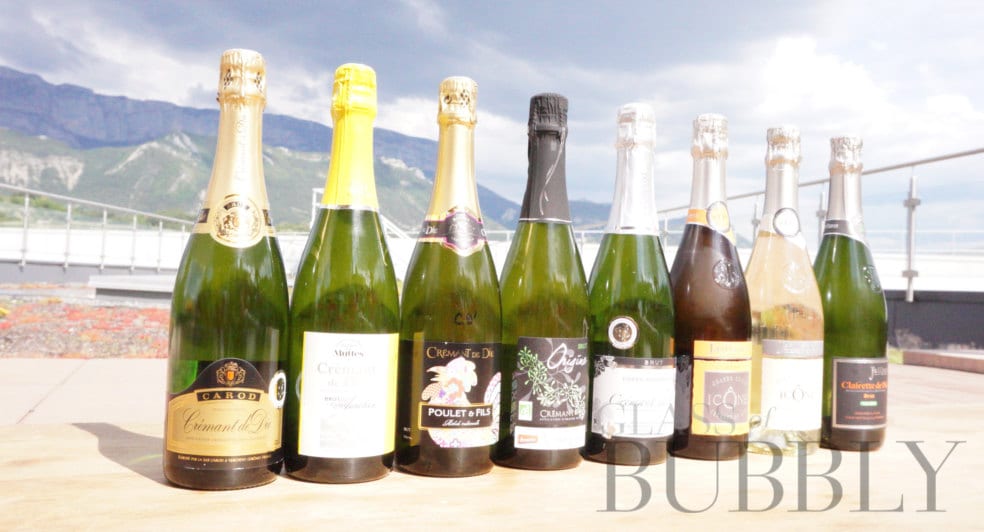Understanding the Flavours Inside the Bottle Before you Pop the Cork
30th October 2019

Describing the tastes of traditional- method sparkling wine is always challenging: the bubbles, especially in a very young cuvée, can be quite punchy and aggressive, often masking the true nature of the wine. The best Champagnes and the serious competition nowadays from Oregon to OltrepòPavese, by way of Trento & Franciacorta, need a certain amount of time to tame the whoosh so that the delicately created mousse may caress the wine, not assault it!
Here are a few tips towards understanding of the parameters. Grapes, Crus, Vintages, how dry? – the classic trio of Champagne
Grapes – First devised after the French Revolution (1789) has never been bettered and is now followed by most fine sparkling winemakers internationally. Pinot Noir is the King that thrives on limestone/clay soils with a touch of sandstone, powerful, poised but with enduring finesse. Chardonnay is the Queen that loves the purest incisive chalk of Champagne’s Côte des Blancs; also found in England’s East Hampshire close to Winchester. Meunier is the Black Prince, a doughty fighter against heatwaves e.g, in the climate- changed torrid 2018/2019.
Crus – Are the recognised, often very superior growths in near-perfect sites – Ay La Pelle, Mesnil Chétillons, Ferrari Trento’s Alto Margonne.
Vintage – Should be the exceptional wine of a single harvest released sparingly two or three times a decade; too often it is offered more frequently to satisfy demand in America for a vintage tag.
How dry is dry? –There is a fashionable demand for ultra bone-dry Champagne with no added sugar (dosage). Personally I think Brut Zéro, Pas Dosé, works better in the Italian Alps, where there is some subtle Mediterranean influence eg by the balmy Lake Garda. Brut Zéro in Champagne is more difficult. You can count the good ones, on one hand, the best for me are Manu Fourny (Veuve Fourny)’s Brut Nature Chardonnay made from old vines at high altitude. Also, Louis Roederer Philippe Starck 2012, made from the trip of cépages harvested on the same day.
Am I a fan of better sparkling wine, particularly paired with gastronomy? Yes, very much so. Gourmets in shirtsleeves have always relished drinking Prosecco Superiore DOCG with spider crabs from the Venice lagoon. Now with chemical-free, vigilant, eco-friendly treatments of the vine, ladies who lunch can enjoy headache-free sparkling wines, was aided by modest alcohol less than 12% Great with all fish or a slice of Parmesan but not please with red meat.
My favourite dining experience, both as a former chief inspector for Egon Ronay but also now more informally as a guest of the sparkling wine houses.
My favourite place, for lunch, is the Michelin three-star L’Arpège in Paris 7ème, close to the Rodin museum. Small and discreet, it specialises in vegetarian creations of the chef-patron, with superb produce from his kitchen garden potager in Le Mans. But if you’re a carnivore like me, you can order the finest Mont St Michel roast lamb you’ll ever eat. A favourite of the de Billy, Pol Roger family with wonderful vintages of Pol.
My favourite place for dinner is the Due Spade in a quiet street close to Trento’s Piazza del Duomo (Cathedral). It has an enchanting atmosphere of an old Osteria; you go downstairs to the intimate restaurant. The food is refined and full of Trentino gastronomic traditions merging Italian and Germanic influences like homemade Spaetzle that taste like a special type of textured egg noodles. Wunderbar. Fine Trentodoc cellar including the best of Cavit and a new friend Paolo Letrari!
![]()
Michael Edwards
Internationally respected Champagne, Sparkling Wine and food author & journalist. Ex Chief Inspector & Wine Editor for the Egon Ronay 'Restaurant Guide'.
